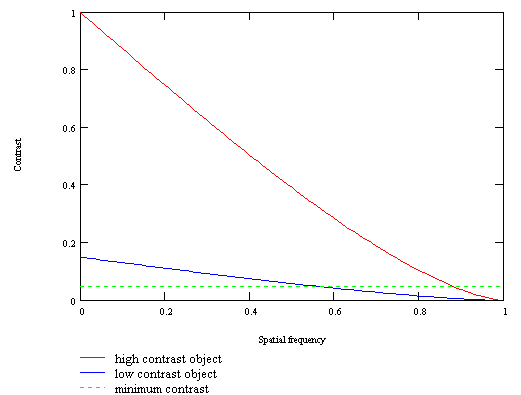
WHAT IS HIGH RESOLUTION ?
High resolution imaging is the technique that consists in obtaining images of the planets, the Sun or the Moon as sharp and detailed as possible.
Although many planetary and lunar images are considered as high resolution ones, very few actually are. Only the images whose amount of details are not too far from the theroretical capability of the instrument are worth this term. Unfortunately, true high resolution images cannot be automatically obtained with any instrument (even a large diameter) in any conditions !
The minimum size of the details that a given instrument can show must not be confused with its resolving power computed with the approximative formula:
R = 120/D (R in arcseconds, D in millimeters).
This value only works with double stars, it gives the approximative minimum separation of a couple of stars of equal magnitude that allows a given instrument to separate them visually. The fact that a planetary detail will be detected or not is very complex, it depends on many factors like its contrast and its shape. In favourable conditions, details whose size is under this stellar resolving power can be recorded, as in the image of Saturn in the home page: the size of the Cassini division is about 0.7 arcsecond at the ends of the ring, and about 0.3 arcsecond where the ring reaches the edge of the planet. Nevertheless it is easily visible on the image, even if the theoretical resolving power of the telescope (9" Schmidt-Cassegrain) on double stars is only 0.55 arcsecond.
The figure below presents the MTF curves (see What is a MTF curve ?) for the same instrument, comparatively on low contrast structures (planetary surfaces) and high contrast structures (Moon, double stars, Cassini division, shadow of a ring or a satellite, edge of a planet). To be detected, a details must have enough contrast. The contrast threshold is arbitrarily set here at 5 %, but its real value depends on factors like the brightness of the object and the technique used (CCD, photography or visual observation). It is clear that the resolution limit is higher on high contrast objects (intersection of red and green curves) than on low contrast objects (intersection of blue and green curves).

In practice, all the problems that affect the instrument and its environment lead to a loss of contrast and therefore to a crushing of the MTF curve: obstruction, optical aberrations (chromatism, spherical aberration, astigmatism, zone, roughness, etc.), internal reflections, atmospheric turbulence, thermal equilibrium defect, misalignement, bad focusing, inadequate sampling, vibrations, etc. Performance deteriorations pile up and, most of the time, the real MTF curve of an instrument has nothing to do with the theoretical curve above. All the difficulty of high resolution is to minimize all the major problems to obtain a real curve not too far from the ideal curve.
What is the contribution of CCD to high resolution ?
CCd technique presents two major advantages over photography:
1) its sensitivity, which permits short exposure times (less than 1/10th s on the Moon) that considerably attenuate the effects of the movement of the images due to the atmospheric turbulence,
2) image processing whose power allows to take the maximum from the raw images.
Thanks to these advantages, in identical circumstances CCD now obtains considerably better results than photography in high resolution. It allows to take the best from the telescope, since the level of details obtained is very close to what the eye sees in the eyepiece (however, it has never been proved that CCD is able to record much more details than the eyes can detect on a planet).
However, we must remain conscious that if CCD is a excellent pointer to the quality of the image given by the instrument, it also is a dreadful pointer of...the absence of quality. If the image in the eyepiece is bad, CCD images will be equally bad. Contrary to a very common but false idea, neither the CCD camera nor the image processing can compensate for the damages due to a defective or incorrectly used instrument. Furthermore, if image processing brings an unquestionable comfort and allows to avoid the painful step of the photographical laboratory, the use of a CCD camera at the telescope is more delicate, specially because of centering and focusing problems. CCD is not synonym of guaranteed result. All the qualities required in photographical high resolution are still essential in CCD: perseverance, meticulousness, desire to progress and constant reappraisal of knowledges and certainties. On the other hand, no special ability in electronics or computers is actually necessary.